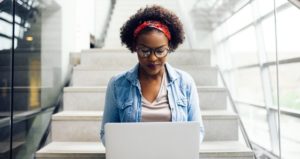“I’m sorry to bother you, but…” was the opening line of every email I received in the first week of this semester. This line was usually followed by nothing that would actually bother me: a question about the week’s materials, a link to an interesting resource, a discussion about a potential research topic, and the like. This was all despite my many attempts to ensure that students did not feel like they were imposing whenever they contacted me: a pre-semester introductory email, a video welcoming them to the course, my biography and teaching philosophy, virtual office hours, and multiple reminders about my contact information. Yet, with all of my entreaties to reach out, I was still dealing with the real issues of isolation, fear, and frustration that results in students leaving their online courses. To combat these feelings, professors—myself included—have to deliberately, consistently, and relentlessly work to build student-faculty and student-student relationships in online courses.













